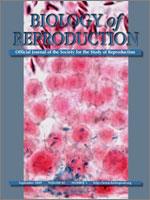In vitro ovarian follicle cultures may provide fertility-preserving options to women facing premature infertility due to cancer therapies. An encapsulated three-dimensional (3-D) culture system utilizing biomaterials to maintain cell-cell communication and support follicle development to produce a mature oocyte has been developed for the mouse. We tested whether this encapsulated 3-D system would also support development of nonhuman primate preantral follicles, for which in vitro growth has not been reported. Three questions were investigated: Does the cycle stage at which the follicles are isolated affect follicle development? Does the rigidity of the hydrogel influence follicle survival and growth? Do follicles require luteinizing hormone (LH), in addition to follicle-stimulating hormone (FSH), for steroidogenesis? Secondary follicles were isolated from adult rhesus monkeys, encapsulated within alginate hydrogels, and cultured individually for ≤30 days. Follicles isolated from the follicular phase of the menstrual cycle had a higher survival rate (P < 0.05) than those isolated from the luteal phase; however, this difference may also be attributed to differing sizes of follicles isolated during the different stages. Follicles survived and grew in two hydrogel conditions (0.5% and 0.25% alginate). Follicle diameters increased to a greater extent (P < 0.05) in the presence of FSH alone than in FSH plus LH. Regardless of gonadotropin treatment, follicles produced estradiol, androstenedione, and progesterone by 14–30 days in vitro. Thus, an alginate hydrogel maintains the 3-D structure of individual secondary macaque follicles, permits follicle growth, and supports steroidogenesis for ≤30 days in vitro. This study documents the first use of the alginate system to maintain primate tissue architecture, and findings suggest that encapsulated 3-D culture will be successful in supporting the in vitro development of human follicles.
How to translate text using browser tools
27 May 2009
Encapsulated Three-Dimensional Culture Supports Development of Nonhuman Primate Secondary Follicles
Min Xu,
Erin R. West-Farrell,
Richard L. Stouffer,
Lonnie D. Shea,
Teresa K. Woodruff,
Mary B. Zelinski
ACCESS THE FULL ARTICLE

Biology of Reproduction
Vol. 81 • No. 3
September 2009
Vol. 81 • No. 3
September 2009
follicle
follicle-stimulating hormone
follicular development
luteinizing hormone
menstrual cycle




